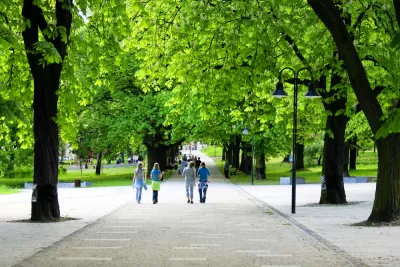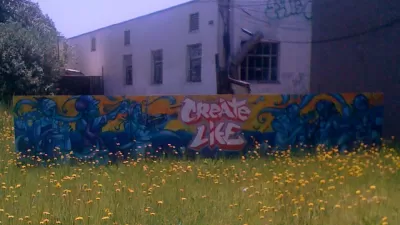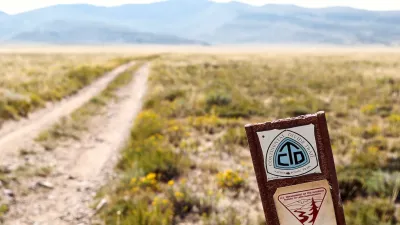The healthiest neighborhoods are both walkable and green, according to a growing body of evidence.

Kaid Benfield puts out a call to action better connect place to health. According to Benfield, the formula for success in bringing better health outcomes to communities is simple: nature and walkability.
According to Benfield, "there is compelling new research, from a variety of medical and other scientific sources, about what makes a neighborhood healthy." While walkability has long been an urban design feature sought by urban designers and other advocates for smart growth, another piece is necessary to deliver the most health benefits. "To be truly healthy, especially in cities, we also need nature in our communities," explains Benfield.
The article sets context with past research public health outcomes connected to the environment, like obesity and asthma. There are a few potentially surprising environmental conditions with a direct connection to public health outcomes, like noise pollution. One of the new studies shared by Benfield offers a "meta-analysis of urban and rural differences in mental health, finding "the incidence of mood disorders (mostly depression) was 39 percent higher and the incidence of anxiety disorders was 21 percent higher in cities than in rural areas."
Belfield doesn't present this information to present urban living in a negative light. Rather, he writes, "city environments can also be very supportive of health if we get the neighborhoods right." The article goes on to share studies that delve into the characteristics of walkability and urban nature than can deliver the most benefit top public health outcomes. There's a ton of research and information here.
FULL STORY: The Science Is In: The healthiest neighborhoods are both walkable and green

Alabama: Trump Terminates Settlements for Black Communities Harmed By Raw Sewage
Trump deemed the landmark civil rights agreement “illegal DEI and environmental justice policy.”

Planetizen Federal Action Tracker
A weekly monitor of how Trump’s orders and actions are impacting planners and planning in America.

The 120 Year Old Tiny Home Villages That Sheltered San Francisco’s Earthquake Refugees
More than a century ago, San Francisco mobilized to house thousands of residents displaced by the 1906 earthquake. Could their strategy offer a model for the present?

Ken Jennings Launches Transit Web Series
The Jeopardy champ wants you to ride public transit.

BLM To Rescind Public Lands Rule
The change will downgrade conservation, once again putting federal land at risk for mining and other extractive uses.

Indy Neighborhood Group Builds Temporary Multi-Use Path
Community members, aided in part by funding from the city, repurposed a vehicle lane to create a protected bike and pedestrian path for the summer season.
Urban Design for Planners 1: Software Tools
This six-course series explores essential urban design concepts using open source software and equips planners with the tools they need to participate fully in the urban design process.
Planning for Universal Design
Learn the tools for implementing Universal Design in planning regulations.
Clanton & Associates, Inc.
Jessamine County Fiscal Court
Institute for Housing and Urban Development Studies (IHS)
City of Grandview
Harvard GSD Executive Education
Toledo-Lucas County Plan Commissions
Salt Lake City
NYU Wagner Graduate School of Public Service





























